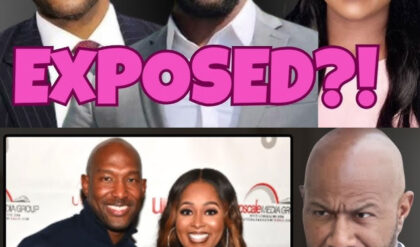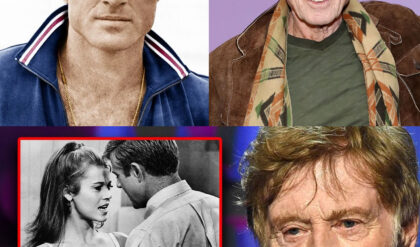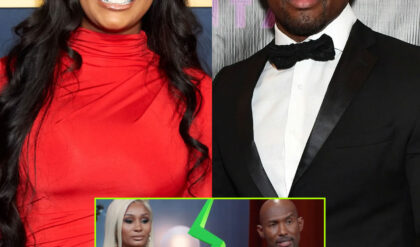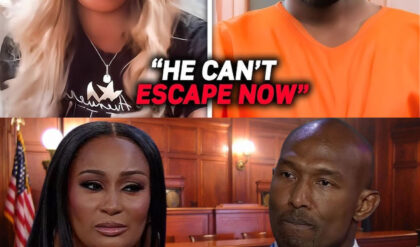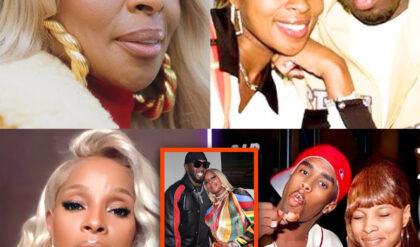Twenty years ago, ‘8 Mile’ hit theaters, taking audiences on a quasi-biographical journey through Marshall Mathers’s life. It also spawned his biggest hit—an underdog anthem that lives on through commercials and sports arena sound systems to this day.
Eminem wasn’t exactly trying to make a global anthem. Inside his trailer, between shooting scenes for 8 Mile, he scribbled words in notebooks, attempting to channel the personal desperation of a character whose life he’s once lived. All he needed for inspiration was a walk through his old Detroit neighborhood, where the mobile homes, the abandoned buildings, the remnants of a once-thriving industrial center all painted a bleak portrait of disenfranchised life. But the recycled memories of his underdog, outsider upbringing—and the grit he’d needed to escape that environment—embodied a specific ladder-climbing American dream. The song he was sketching would never be just about him.
/cdn.vox-cdn.com/uploads/chorus_image/image/71578493/eminemf.0.jpeg)
Ali Nolan first heard “Lose Yourself” inside her cross-country team van, the opening guitar chords blasting through the speakers and rattling through her brain. In 2002, as a 16-year-old at the Élan School in Maine, Nolan had just begun running, hadn’t seen 8 Mile, and had never been exposed to hip-hop. But when her coach began playing Eminem’s new hit, she couldn’t help but nod her head. “There’s something so hypnotic about that,” Nolan says. “I don’t think that I immediately felt motivated, but it was a song that I immediately knew had importance.” Soon, listening to it became her team’s race-day tradition.
On the way to meets, her coach ritualistically—and sometimes sadistically—pumped the song on a loop, instilling its chorus into his runners’ subconscious. “You better lose yourself in the music. / The moment, You own it. You better never let it go.” Throughout months of verbally abusive practices and grueling training sessions, however, Nolan learned to isolate and adopt its time-sensitive message, leaning into the lyrics’ nervous energy and finding a flow state that would eventually help power her team to a state championship. “In a weird way, my coach was thinking ahead of his time, because it did work,” she says. “I think [he] thought that this was relatable to all of us in one way or another.”
Nolan would revisit these memories 15 years later, in a 2017 essay for Runner’s World, after her editorial team began brainstorming a list of the best running songs. By then a workout staple, “Lose Yourself” had become synonymous with those visceral cross-country meets, prompting her to look deeper into the song’s omnipresent, earworm status and its subliminal if not slightly generic commandments. “You have to just go for it and be exactly who you are in front of the world,” Nolan says, bridging her mindset to Eminem’s own origin story. “It’s a matter of finding your authentic self and authentic voice.”
Eminem Live At Tramps
:no_upscale()/cdn.vox-cdn.com/uploads/chorus_asset/file/24164530/82741626.jpg)
Eminem and Royce da 5’9” at Tramps in New York City in 1999 Photo by Catherine McGann/Getty Images
When 8 Mile premiered on November 6, 2002, audiences left theaters with a similar high. As the closing-credit song to Eminem’s unlikely box office smash, “Lose Yourself” captured the plight of the movie’s battle-rapping protagonist, a pseudo-fictional stand-in for Eminem, the white Motor City MC whose impoverished upbringing and meteoric rise to fame quickly took on a mythic quality. But its rock and orchestral instrumentation and motivational verses transcended the movie itself, connecting Eminem to a new demographic of listeners and catapulting the soundtrack’s single to the top of the Billboard Hot 100, where it stayed for 12 consecutive weeks on its way to acquiring an Oscar and two Grammys. “It’s this universality—that’s the appeal,” says Vulture music critic Craig Jenkins. “He’s finding a way to tell his story but making it applicable to everyone listening.”
Two decades later, “Lose Yourself” remains carved into the culture, one of the most popular songs of the century, underscoring both Eminem’s lyrical and rhythmic genius and his towering, multihyphenate celebrity throughout the early 2000s. Today, it’s impossible not to have heard the song reverberating inside sports arenas and stadiums, buzzing through headphones at a local gym, or, in Nolan’s case, preparing runners for the starting line. It became the ultimate motivational mood-setter, written by someone who embodied its long-shot ethos throughout the entirety of its method-like creation. “It was really cathartic for him,” says Joel Martin, owner of the 54 Sound studio where Eminem recorded the song. “How do you write an anthem that’s culturally so important and tied into that story? It was just a work of genius—but that’s what he does.”
In the summer of 1984, Prince stood on top of the world. Purple Rain debuted to widespread critical acclaim and became one of the highest-grossing movies of the year, producing four Top 10 hits and cementing itself as a pop-music phenomenon. As a semi-autobiographical work, it exposed the world to an ego-driven, sometimes cruel and vulnerable version of the singer, offering more insight into someone who rarely gave interviews or shared details about his personal life. Within a week of its release, the Minnesota-based icon had the no. 1 movie and no. 1 song in America.
About a decade later, Interscope head Jimmy Iovine wanted to give hip-hop its own Purple Rain. Though he originally conceived a rough sketch of a 2Pac movie, Iovine later told Complex, “When Eminem came along, I said, ‘Wow, I wonder if that would work for Marshall.’” He had sound reasoning. Not long after Iovine and Dr. Dre signed Eminem to their label, the rapper broke out with his alter ego on 1999’s The Slim Shady LP and transcended genres 15 months later with The Marshall Mathers LP. In less than two years, an angry, controversial white rapper from Detroit had stuck up a middle finger at the pop-cultural landscape, sparking congressional fear and outrage from GLAAD and women’s groups over his subversive language and violent imagery. Still, his fresh voice, multiple personas, and skilled rapping ability cut through the negative and racial labels, the honesty about his bullied, trailer-park adolescence helping skyrocket him to fame.
2002 MTV Video Music Awards – Show
:no_upscale()/cdn.vox-cdn.com/uploads/chorus_asset/file/24164534/2289888.jpg)
Eminem at the 2002 MTV Video Music Awards Getty Images
In the midst of record-breaking album sales, Iovine sought to capitalize on the rapper’s popularity and rebrand another Midwestern music talent as a movie star. After failing to make inroads with a handful of Hollywood executives, he asked Paul Rosenberg, Eminem’s manager, to meet with producer Brian Grazer to pitch the long-gestating big-screen idea. It was an easy sell—Grazer had also been hooked on the lucrative potential of a hip-hop movie and thought Eminem’s charisma would connect with audiences. When he set up a meeting in his office with the rapper to discuss the project’s prospects, “He just wouldn’t talk. He wouldn’t even look at me,” Grazer said in the movie’s production notes. “After about 15 minutes, he finally engaged. And once I got him talking, he was fantastically articulate and eloquent.”
Once Eminem came on board, Grazer eventually tapped Scott Silver to start penning a screenplay based on extensive conversations he’d had with the rapper about his scrappy younger days. “Basically, me and Proof, who is one of my best friends, got together with him and we were just kickin’ it, like, ‘Remember that time?’” Eminem told Entertainment Weekly in 2002. “We told [Scott] about how we used to do it, how we used to battle [other rappers], the clubs we used to go to, showed him tapes of me at the Rap Olympics and Scribble Jam. When the script got sent to me … I hate reading. But I read the first couple of pages and couldn’t stop.”
Though it underwent numerous alterations under director Curtis Hanson, the script always focused on Jimmy “B-Rabbit” Smith Jr., an aspiring rapper navigating the underground battle scene with a group of friends and competitors. Like Eminem’s own experience dealing with adverse circumstances, B-Rabbit works a dead-end, blue-collar job to support his mother, who experienced alcoholism, and younger sister, living in a trailer just north of Detroit’s eight-mile dividing line that separates the more affluent suburban neighborhoods from the city’s impoverished outskirts. “That was really what drove Curtis’s interest in the project,” says 8 Mile executive producer Carol Fenelon. “He was really taken with the idea of the battle rap sequences, and we were both very passionate about our belief that economic inequality in this country was one of the things that was the most divisive in our culture.”
A few weeks ahead of shooting, in the fall of 2001, Fenelon remembers sitting down with Mathers and Hanson to discuss the movie’s most important aspect: the soundtrack. Over the previous month, the first-time actor had spent a lot of time with Hanson in Detroit, exploring the city, rehearsing lines, reviewing the script’s details, and developing his character so that it differed in specific, key ways from Mathers’s own life. Those distinctions would be crucial to building a hit single for the end credits, especially considering “so much of [Eminem’s] lyrical content is self-referential,” Fenelon says. “He needed to write from the point of view of the character.”
She and Hanson had recent history to back them up. They had just come off an awards run together for Wonder Boys, in which Bob Dylan’s “Things Have Changed” won the Oscar for Best Original Song. The reason for its victory, they believed, was because its lyrical content was inextricably tied to the characters and plot of the movie and could still be enjoyed out of context. So, before production began that winter, they made sure the hottest rapper on the planet understood his mission and the framework behind their recommendation: “Anybody who watches the movie will pick up on those [Jimmy] references,” Fenelon reasoned, but even “if you don’t watch the movie, you should still appreciate the song as a great song.”
Before Mathers began work on 8 Mile, Jeff Bass had broken out his Fender Stratocaster and strummed something he liked. The Detroit-based music writer and producer had discovered Eminem with his brother, Mark, in 1995, signing him to their fledgling label, F.B.T. Productions, their venture with Joel Martin. In their basement recording studio, they’d released the rapper’s first album, Infinite, and quickly developed a strong creative partnership. “We took him in like a younger brother and kind of groomed him and showed him how the recording process works,” Jeff Bass says. “I could play all these instruments [and] I was able to add something different to what most people were doing at that time.”
Eminem In ‘8 Mile’
:no_upscale()/cdn.vox-cdn.com/uploads/chorus_asset/file/24164538/159840519.jpg)
A scene from 8 Mile Photo by Universal/Getty Images
Throughout his success under Dre, Eminem continued to write and record with Bass at Martin’s 54 Sound Studio, sticking close to his roots and early collaborators in the Motor City. “My studios closed for 7-8 years just to focus on Eminem-related works,” Martin says. “Basically, this was Eminem central.” A lot of times, that meant messing around in the studio, like when Bass laid down a soon-to-be-famous chunky and percussive guitar track in D-minor that the rapper wanted desperately to use. “We just kept pulling it out every time we got together to record,” Bass says. “We loved the track so much and we just didn’t know what to do lyrically with it.”
It wasn’t until Mathers sunk into character that he began to find the words to Bass’s rock-inspired riff. In between shooting his scenes, “Em was always working—he always had his headphones on, sitting in a corner with a notepad,” Evan Jones, who played Cheddar Bob, recalled to Grantland in 2014. “He’s acting for the first time, he’s basically in every single scene, he was raising his daughter, he had relatives in town, he had to do the soundtrack album, he had to constantly come up with lyrics.” But the more Mathers burrowed into B-Rabbit, the more he found lyrical clarity. “He wanted to be writing that song while he was in character,” Fenelon says. “That’s what motivated him.”
To make things easier for Mathers, Martin created a makeshift mobile recording studio inside his trailer, filling it with a few keyboards, a microphone, and mixing boards from 54 Sound that engineer Steve King put together. “We couldn’t get the analog machine in the trailer, so we went full digital,” Martin says. “Marshall would pop in and write and do lyrics and he would lay the shit down in the trailer.” As the song came together, King tried some rearranging to the introduction, putting a piano prelude (which Bass had also separately recorded) before the guitar. “It was a brilliant production move,” Bass says. “The guitar falls into it—it’s just set up so perfectly.” Still, it didn’t have the total cinematic feel Mathers wanted yet.
Late into shooting, Luis Resto—a classically-trained producer who had recently worked with Eminem on a D12 session—got a call from Rosenberg asking him to hustle to Mathers’s trailer to work on the movie’s ending track. As soon as he arrived, Resto heard Eminem’s verses and knew people would freak out when they did. “I hadn’t heard Marshall flip a lyric in such a positive vein to this degree,” he says. Though the song’s structure was mostly intact, Mathers felt it leaned too heavily into rock and wanted Resto to create something more dynamic. “I went into arrangement mode,” Resto says. “I replaced what used to be guitar rock chords with orchestral hits and large percussive timpanis that built to the verses so that it didn’t lose interest across the five minutes.”
Using a synthesizer, Resto also added strings, a choir, and more piano licks—reflecting Bass’s opening bars—that accented the empty pockets in Eminem’s rhymes, giving it a classicism that complemented the guitar’s rough edges. After Resto finished his work in the trailer early that morning, he’d return occasionally to help with the soundtrack’s other arrangement needs, knowing the rapper had made something special. “You hear that first chunk and you’re going Lose Yourself! It’s an identity,” Resto says.
Eminem echoes that syncopated introduction throughout his multidimensional rapping, which leans on rhyme complexity and assonance (when two words share the same ending-vowel sounds). In his book How to Rap: The Art and Science of the Hip-Hop MC, Paul Edwards cites a bar in the first verse: “Ope, there goes Rabbit, he choked / He’s so mad, but he won’t give up that easy, no…,” showing how Eminem “intercuts two sets of vowel sounds together,” he writes. “Assonance, in this case, also contributes to the tension of the song.”
“It’s epic, it’s pensive and foreboding all at the same time, and that makes Marshall describing the struggles—it kind of feeds on itself,” Resto says. “The chords support the words and the arrangement supports the chords to make it build and get you.”
Pepsi Super Bowl LVI Halftime Show
:no_upscale()/cdn.vox-cdn.com/uploads/chorus_asset/file/24164542/1370402970.jpg)
Eminem during the Super Bowl LVI halftime show in Los Angeles Photo by Kevin C. Cox/Getty Images
Like Hanson and Fenelon had hoped, Mathers had poured his character onto the page, spending two verses telling B-Rabbit’s narrative before launching into a first-person climax to make “the hottest third verse I’ve ever heard,” Bass attests. After spending a lot of time tweaking the lyrics, Mathers had found a way to blend the movie’s story with his own reality. “Eminem does a great job of existing somewhere in between personal and fictional, which really great hip-hop does,” says Charlie Harding, a songwriter and cohost of the Switched on Pop podcast. “I think that this is the ultimate demonstration of one of Eminem’s gifts. His raps are always intricately leaning on techniques of flow and rhyme, but there is always narrative, which is the thing most consistently impressive about him.”
Well before the movie was released, Martin remembers hearing a rough version of the song for the first time with a group of people. “It was a combination of the script and Marshall’s actual tale,” Martin says. “I was like, ‘What the fuck, are you kidding? How did you put that together?’” When Fenelon listened to the song before the final mix, she had a similar reaction. “It’s one of those moments—and it doesn’t happen very often, even though I was in the music business—where the hair stands up on the back of your neck,” Fenelon says. “You just know that this is going to be a huge song.”
After shooting wrapped, Eminem maintained his controversial and ubiquitous place within pop culture. In May 2002, he dropped his fourth studio album, The Eminem Show, “a messy, tabloid-driven album that amplified his persona as an angry and divisive figure,” says journalist and critic Mosi Reeves. Two months later, he accepted the MTV Video Music Award for Best Male Video for his single “Without Me,” a moment that garnered boos inside Radio City Music Hall when the rapper insulted Moby during his acceptance speech. Still, his popularity as a polarizing celebrity continued to rise, and Universal, hoping to capitalize on his record sales without spoiling the upcoming soundtrack, eventually inserted “Cleanin’ Out My Closet,” another single from the album, into the first trailer for 8 Mile. “It’s got that really interesting piano, acoustic-feeling intro,” Fenelon says. “It really dovetailed beautifully with all the family stuff in [the movie].”
The strategy paid off. “Lose Yourself” debuted on October 5 at no. 43 on the Billboard singles chart, and would move up 37 spots throughout the month. Although most prerelease estimates slated the movie to earn around $25 million, 8 Mile more than doubled the projection over its opening November weekend, racking up $54.5 million thanks in large part to its under-25, hip-hop-inspired audience. Throughout its first week in stores, the movie’s soundtrack sold nearly a quarter-million copies, and the single jumped to no. 1, marking just the second time since Prince that an artist had both the top song and movie in the country. “It took a long time to get everyone on board, but Jimmy Iovine understood the cultural aspect of what would happen,” Martin says. “He doesn’t get enough credit.”
To a certain extent, both the movie and the song grated against the reputation Eminem had curated over the previous few years. “It’s a relief to see Eminem give up the preening megalomania of his last album, ‘The Eminem Show,’ in which he seemed inordinately impressed with the size of his fame,” David Denby wrote in his review for The New Yorker. “He’s gone back to his roots, or at least a mythicized version of his roots.” Indeed, at a time when pop stars—Mariah Carey and Britney Spears among them—were attempting to make their mark at the box office (some unsuccessfully) and introduce another side of themselves, Eminem had effortlessly reframed the narrative around his background and perspective as a rap artist. As Reeves puts it, 8 Mile and “Lose Yourself” “helped Eminem pivot as a kind of Rocky-like figure, a white underdog who achieved success in a Black-dominated industry against long odds.”
That analogy fits for a song conceived as the victorious end to a movie with a sports-story structure. Much like the opening horns in Bill Conti’s “Gonna Fly Now” or the guitar slams in Survivor’s “Eye of the Tiger,” Bass’s syncopated guitar riffs provide an inspirational hook and chord progression that Harding likens to Led Zeppelin’s “Kashmir,” expanding to an orchestral chorus that keeps its introductory piano flourishes in the foreground. “That’s the kind of ear candy you only hear in a really well-produced song where, in between every little line, you get this piano,” Harding says. “It creates these counter hooks that provide melodic material in a rap song that works well on pop radio, [while] continuing to help the song exist in a really cinematic place.” The minor chord progressions also work “on the borderline of musical confidence and musical nervousness,” he says, where “the picking pattern, the dynamics, the accenting pattern is inconsistent, as if it’s a novice guitar player.”
It all helps lay the foundation for the jittery first lines, in which Eminem embodies B-Rabbit’s turbulent inner mind—and upset stomach—as he prepares to take the stage with the vomited remnants of his “mom’s spaghetti” on his hoodie. “How many songs start with a person puking and people keep listening?” Jenkins says. “That’s an incredible achievement in and of itself.” Though the phrase would eventually be parodied by Weird Al and YouTube video creators (and inspire an Eminem-owned restaurant in downtown Detroit), as Harding notes, “it’s an excellently written song in that flow, rhyme, and story are so intertwined that you can throw a word like ‘spaghetti’ into the mix.” It’s an ability that reminded Resto of Duke Ellington’s sax sessions, “approaching it with these angles that I hadn’t heard,” he says.
Throughout the rest of the song, Eminem blends the personal with the universal, pivoting between B-Rabbit and his own Detroit experiences in a way that could transcend the movie and its specific narrative. Those more applicable facets kept “Lose Yourself” at the top of the chart for three consecutive months, leading up to The Eminem Show winning the Grammy for Best Rap Album, which further etched the distinctions between his musical personas. “It’s not like any song from [The Slim Shady LP], which is extremely specific to that trailer-park experience,” Jenkins says. “He was equally beloved and reviled, pushing a lot of uncomfortable conversations about language and the character of Middle America, [but “Lose Yourself”] is sort of faceless—it’s his experience, but only for you to take away a motivational message.”
As the Academy Awards approached in March 2003, Fenelon wanted Universal’s music department to start promoting the song ahead of the show, but she kept getting the same response: “Everybody knows Bono is going to win.” The Irish singer had won the Golden Globe already for his song “The Hands That Built America” in Gangs of New York, and the studio felt “8 Mile was too controversial, it wasn’t an Academy movie, and that rap was something most Academy members couldn’t get their head around yet,” Fenelon says. A few weeks after performing “Lose Yourself” with the Roots at the Grammys, Mathers decided not to attend, opting instead to stay at home with his daughter. “Back then, I never even thought that I had a chance to win,” he told Variety in a 2020 interview. “At that time, the younger me didn’t really feel like a show like that would understand me.”
With Eminem a no-show and Bass on diaper duty with a newborn, Resto decided to go “on a hoot” in the unlikely event that they won. When Barbra Streisand eventually called Eminem’s name, marking “Lose Yourself” as the first rap song to win an Oscar for best song, Martin says, “I almost jumped off my balcony, I couldn’t believe it.” Resto, wearing a gray blazer over a red Pistons jersey, sprinted up the stage to accept the award. “I was out there on a lark,” says Resto, who briefly thanked Mathers and commended him as a musician and person. “It was very surreal.” Less than a year later, Eminem finished the song’s awards run by winning the Grammy for Best Rap Song and Best Male Rap Solo Performance, solidifying its hold over the public consciousness. “Everyone thought it was one of the best things he’d ever done,” Fenelon says. “That movie catapulted him to a whole new level of acceptance by every demographic in the culture.”
LessLess than two months before Super Bowl XLV in February 2011, Olivier Francois called up Martin with a big-swing idea. Though Martin, who owned the song’s publishing, had refused every request from bidders to license “Lose Yourself,” he listened to Chrysler’s chief marketing officer pitch his “Imported From Detroit” car ad that would tell the story of the beleaguered city in front of the biggest television audience of the year. “I got a call from Olivier at midnight and he asked me to meet him in the studio and he literally presented the whole Chrysler campaign around ‘Lose Yourself’ with a book,” Martin says. “Chrysler was done, they literally were coming back from nothing after bankruptcy, and I thought this was unbelievable because it tied into ‘one shot.’”
Though Mathers didn’t initially want to be involved, Francois was relentless in his convincing. The Chrysler 200 ad “was really selling an industry that meant the world to a city … that means everything to Eminem,” he writes in an email. Once Eminem found out that Martin had licensed the song, and Francois spoke to him more about the vision, he agreed to star and get behind the wheel. Martin had enlisted Bass and Resto to re-record the song, and brought in the Black choir Selected of God to provide background vocals inside the Fox Theatre, where Mathers would park after driving through Detroit’s gray, depressed, and deteriorated streets. “Eminem not only agreed on the spot to appear in the film,” Francois writes, “but to utter the final words, ‘This is the Motor City, and this is what we do.’” Anchored by the instrumentals of “Lose Yourself,” the eventual two-minute ad looked and felt different, garnered more than 5 million views on YouTube in its first week, and became one of the most influential ad campaigns of the decade. “It was a gamble. It was the only time we ever allowed that for advertising use,” Martin says. “People went crazy when they saw that.”
The two minutes harnessed the song’s underdog attitude and affiliation with Detroit, and it recalled Eminem’s own comeback from a prescription-drug addiction that resulted in a five-year musical hiatus. “We knew that Eminem, a global symbol for Detroit’s hardscrabble character, was engaged in a recovery of his own,” Francois writes. But the song’s power is evident in the way it’s expanded outside Eminem’s personal story, becoming the de facto inspirational anthem for anyone preparing for a major moment or milestone. In 2008 Barack Obama used “Lose Yourself” and Jay-Z’s “My 1st Song” throughout his presidential campaign (Joe Biden would also use “Lose Yourself” a decade later), because “both were about defying the odds and putting it all on the line,” he later said. It was implemented as a motivational tactic by Pete Carroll at USC, provided a prelude to Derek Jeter’s momentous final at-bat at Yankee Stadium, and became a preshow ritual for recent Jeopardy! champion Amy Schneider. Lin-Manuel Miranda, a longtime Eminem fan, even borrowed from the chorus to inform the song “One Shot” in his Broadway hit Hamilton.
“Lose Yourself” became so ingrained as a motivational anthem that researchers at Hartpury University in England eventually studied the song’s physiological effects on British swimmer Ben Hooper in 2015 as he trained to swim across the Atlantic Ocean. “With Ben, listening to Eminem, for example, inspires confidence and determination, as there is a general theme of triumphing against the odds,” said lead researcher Richard Collins, who found the song increased athletic performance by 10 percent throughout a 13-week study. It’s no wonder it remains a workout playlist staple on Spotify (The Ringer’s parent company), where it became Eminem’s most-listened-to song, surpassing 1.5 billion streams. In the years since writing about it for Runner’s World, Nolan has been able to listen to “Lose Yourself” fully again, a healing process that’s allowed her to embrace it as a never-give-up running staple. “I think that’s why people love it so much,” she says. “You overcome every odd to be your greatest self.”
“It’s the sound of that era, that Jock Jams spirit,” Jenkins says. “It’s perfect for an athlete’s physical sacrifices and team greatness. It’s that story, too.”
Eminem has continued to embrace the song. In 2020, he performed it at the Oscars, making up for his absence 17 years earlier by impressing most of the audience. (“I kinda figured maybe since I didn’t get a chance to do it at the time, maybe it would be cool,” he told Variety.) And earlier this year, he broke it out again as part of the Super Bowl LVI halftime show, reuniting with Dr. Dre and rapping alongside Snoop Dogg, Kendrick Lamar, 50 Cent, and Mary J. Blige to further flex its old-school, sports-centric grip. “It’s Eminem’s signature song now,” Reeves says. “It’s the one major hit that isn’t complicated by all the criticisms of him—his misogynistic and homophobic themes, his penchant for ‘over-rapping,’ his goofy and off-putting sense of humor, and his erratic taste in beats. It’s just a good, accessible rap cut that works very well on a pop level. It’s a Rosetta stone for anyone curious about Eminem’s lasting appeal.”
Looking back, Bass says that guitar riff was something he “channeled through the universe,” and believes the song solidified the belief he could write a hit single “because what we hear on the record is exactly what was written and produced in the studio.” Considering many songs today can have up to a dozen writers, Resto, who still works with Mathers, appreciates the small, tight-knit collaboration process that created “Lose Yourself” without interference. “We caught a moment that was really special,” he says. In doing so, they built a cinematic hit that hooked a generation and never stopped expanding in scope. “Something happens that nobody can quite put their finger on,” Martin says. “I think [Eminem’s] as surprised as anybody that this happened.”

